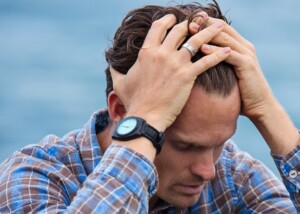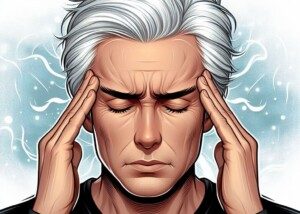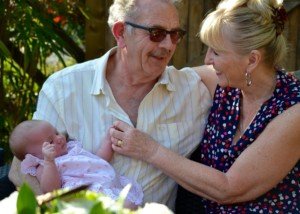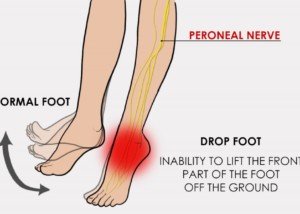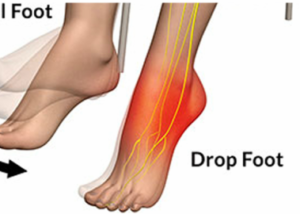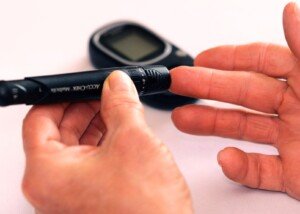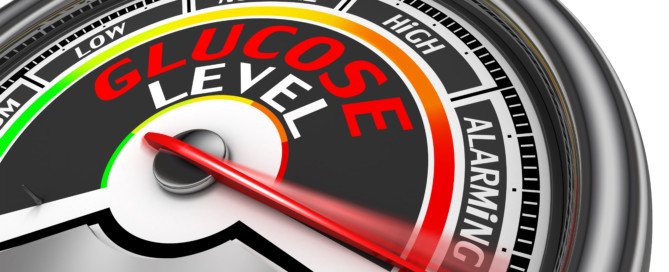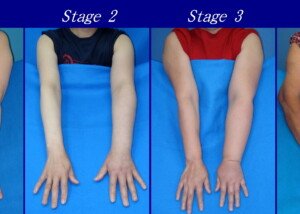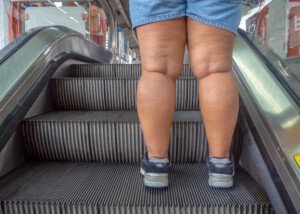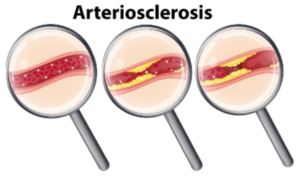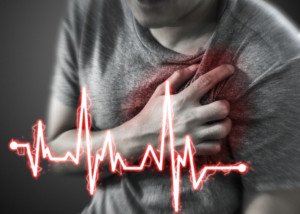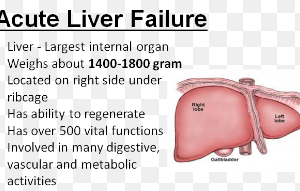Brain Mets vs. TIA: Symptom Comparison, Differences
![]()
How can one tell the difference between a transient ischemic attack (TIA) and brain metastases?
There’s an overlap of symptoms with a TIA and brain mets, but there’s also features of brain mets that would not be caused by a transient ischemic attack.
Symptoms of Metastases in the Brain (no particular order)
• Headache
• Nausea, vomiting
• Seizure, especially for the first time in someone over 35
• Trouble with neck flexion
• Sensitivity to light
• Cognitive problems
• Weakness on one side of the body
• Balance problems
• Back pain
• Loss of bladder or bowel control
Symptoms of a Transient Ischemic Attack (no particular order, all are sudden-onset)
• Weakness on one side of the body
• Paralysis on one side of the body
• Paralysis, numbness or weakness in the face
• Drooping on one side of the face
• Slurred speech
• Difficulty understanding speech
• Cognitive impairment or confusion
• Double vision
• Blindness in one eye or both
• Loss of balance, clumsiness
• Heavy feeling on one side of the body
• Dizziness
As you can see, there is some overlap with the symptoms of both conditions, and there are also some striking differences.
But it’s the overlaps that can bring out the panic. Both conditions are life-threatening, but it’s safe to assume that very few people would choose to have a brain metastasis over a transient ischemic attack.
The treatment for a TIA is usually a prescription blood thinner, namely Warfarin (coumadin), and this drug is highly effective at helping prevent another blood clot in the brain.
Brain Mets vs. TIA: the Most Striking Difference
The biggest difference between brain mets and a TIA is duration of the symptom or symptoms.
Duration of a TIA is usually minutes – with the average being about a minute — though a TIA can last an hour or more.
By definition a transient ischemic attack is transient—temporary. Some can last a mere 30 seconds. Every TIA symptom is sudden in onset. Boom! It’s there.
And by the way, the symptoms of brain mets are the same as those of a primary brain tumor.
Symptoms of brain metastases are not transient or short-lived because the tumor doesn’t suddenly appear (like a blood clot) and then dissolve minutes later.
The mass remains there and keeps growing, and can only be removed via surgery. Let’s look at the symptoms of brain mets in more detail.
Symptoms More Suggestive of Brain Mets than a TIA
• Morning headache
• Morning nausea and vomiting
• Gradual-onset cognitive problems which may include short-term memory impairment
• Headache together with a seizure (the two most common symptoms)
If you suspect you had a transient ischemic attack, this is a medical emergency and you should have someone drive you to the ER.
A TIA is a harbinger of a near-future stroke, and that near-future stroke could occur sooner than you think.
On the other hand, if you think your symptom/s were caused by a brain metastasis, get to the ER, because even though it may not seem like an immediately-urgent situation, you could have a seizure (if you already didn’t) – next time you’re driving.
 Lorra Garrick has been covering medical, fitness and cybersecurity topics for many years, having written thousands of articles for print magazines and websites, including as a ghostwriter. She’s also a former ACE-certified personal trainer.
Lorra Garrick has been covering medical, fitness and cybersecurity topics for many years, having written thousands of articles for print magazines and websites, including as a ghostwriter. She’s also a former ACE-certified personal trainer.
.
Top image: Shutterstock/Rawpixel.com
Sources:
emedicine.medscape.com/article/1157902-overview
mayoclinic.org/diseases-conditions/transient-ischemic-attack/basics/symptoms/con-20021291
health.harvard.edu/stroke/dont-be-fooled-by-tia-symptoms
emedicine.medscape.com/article/1157902-clinical
abta.org/secure/metastatic-brain-tumor.pdf
strokeassociation.org/STROKEORG/AboutStroke/TypesofStroke/TIA/TIA-Transient-Ischemic-Attack_UCM_310942_Article.jsp#.WHiFylMrLxM
What Is the Slowest ALS Can Progress?

The life expectancy after ALS diagnosis averages two to five years, but progression of the disease is not always predictive of life expectancy.
Progression of this fatal disease will vary from one patient to the next. (more…)
How ALS Finally Kills a Patient

ALS is 100% fatal, though there are extremely rare cases in which the patient lives many years after diagnosis.
But ALS will kill them, too, assuming that by sheer chance, another illness or accident doesn’t intervene. (more…)
ALS Weakness vs. BFS Weakness: Comparison of Symptoms
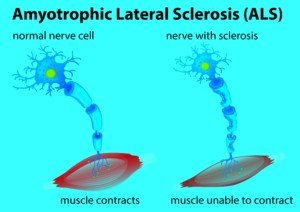
Here’s a comparison between the muscle weakness of ALS and that of benign fasciculation syndrome (BFS).
There are striking differences between the muscle weakness of ALS and that of BFS. (more…)
Is It Okay to Eat Lots of Sugar if Glucose Level Is Normal?

Do you have the green light to eat a ton of sugar in one sitting if your blood sugar level is in the normal range?
For example, you’re healthy and have a glucose monitor device at home. (more…)
How to Stop Worrying About Your Moles

Anxiety over your moles can get bad enough to disrupt productivity at work, ruin social events & cause insomnia.
However, you can overcome this nagging problem. (more…)
How Dangerous Is Blood Sugar in the 400’s?
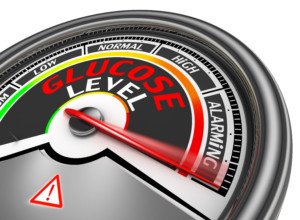
You know it’s bad, but HOW bad is a glucose reading in the 400’s?
This can be “a very unhealthy place and could be a medical emergency,” says Alison Massey, MS, RD, LDN, registered dietitian and certified diabetes educator with over 10 years of experience in various community and clinical settings.
“The American Diabetes Association blood glucose target for healthy blood glucose management is 80-130 mg/dL before meals and less than 180 mg/dL 2-hours after eating,” says Massey.
“If blood glucose levels are in the 400’s mg/dL and won’t go down, an individual with diabetes may need to go to the emergency room.
“It is important for individuals to know how to handle elevated blood glucose levels, and if levels are elevated daily above the recommended ADA targets, they should discuss this with their healthcare provider.”
The Danger of Blood Sugar Readings in the 400’s
Over 400 is considered extremely high. There’s no such thing as “400 is as bad as 250.”
A glucose reading of 400 means there’s a heck of a lot of sugar in the bloodstream.
It poses two dangers:
• Hyperosmolar hyperglycemic nonketotic syndrome. The body will try to saddle the urine with the excess sugar.
The dehydration that results from this can cause seizures, coma or death.
Symptoms of HHNS: extreme thirst, high fever, vision loss, sleepiness, hallucinations, one-sided weakness.
• Diabetic ketoacidosis. Excessively high glucose levels cause acid buildup in the blood.
This, like HHNS, is a medical emergency and can cause coma or death.
Symptoms include frequent urination, sleepiness, nausea, trouble with breathing and confusion.
So these two conditions can occur with a one-time incident of a blood sugar reading in the 400’s. But what if this recurs?
You might be facing retinopathy, which could result in blindness.
If that doesn’t scare you, what about kidney failure? How about loss of limbs?
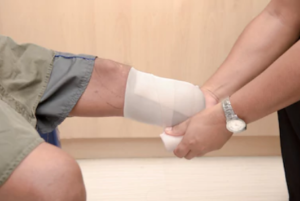
Shutterstock/Tridsanu Thopet
These complications occur to many diabetics. Why? Because they do not properly manage their disease.
This includes failure to maintain regular glucose checks.
Diabetics need to do everything that their doctor and nurse tells them to do —everything to a T.
Diabetes doesn’t HAVE to shorten lifespan.
Blood sugar doesn’t jump into the 400’s for no good reason.
Alison Massey has been working in the field of nutrition since 2010 helping individuals make sustainable changes to improve their health.
 Lorra Garrick has been covering medical, fitness and cybersecurity topics for many years, having written thousands of articles for print magazines and websites, including as a ghostwriter. She’s also a former ACE-certified personal trainer.
Lorra Garrick has been covering medical, fitness and cybersecurity topics for many years, having written thousands of articles for print magazines and websites, including as a ghostwriter. She’s also a former ACE-certified personal trainer.
Top image: Shutterstock/donskarpo
Source: healthguideinfo.com/diabetes-complications/p97836/
Edema, Swelling in Legs from Obesity vs. Heart Failure
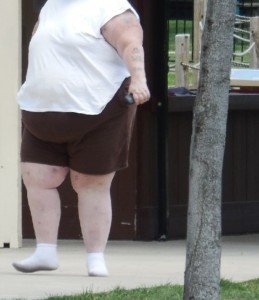
How does one tell if the “edema” in their lower legs is strictly from obesity vs. congestive heart failure?
Though an obese person may also have heart failure, there are obese people who do not have this condition, yet have plenty of swelling in their lower legs. (more…)
Does Echocardiogram Show Plaque Buildup in Arteries?
An echocardiogram is an ultrasound of the heart that, unlike a catheter angiogram (the gold standard for showing plaque buildup in arteries), is non-invasive and carries no risks.
The CT angiogram (CAT scan with contrast dye) shows soft-plaque buildup, but it also emits radiation.
A CT scan without contrast dye (the type used in identifying a person’s coronary calcium score) shows only hard-plaque buildup.
Hard or calcified plaque is stable and not prone to fragmenting or rupturing and forming a clot in a coronary artery.
But if the buildup of this plaque is great enough, it will cause narrowing of the coronary arteries, leading to angina.
Soft plaque is unstable; it can rupture and plug up a coronary artery in seconds, causing a heart attack.
Though calcium score correlates to the likelihood of varying levels of coronary artery disease, the score does not definitively mean that your arteries are clogged up with soft plaque.
Can an echocardiogram actually show soft plaque?
“No, an echocardiogram is an ultrasound that looks at the heart muscle and heart valves,” says Dr. Lowell Steen, MD, Interventional Cardiologist at Loyola University Medical Center, Director of the Interventional Cardiology Fellowship Training Program, and Medical Advisor to 120/Life, a functional beverage with a blend of six natural ingredients that promote normal blood pressure.
“It cannot look at coronary artery plaque. However, it can indirectly tell if someone is suffering from blockages or has had a silent heart attack. If the heart looks weak, blockages are often the reason.”
When my mother had an echocardiogram following chest pain and shortness of breath, the cardiologist said that it was “abnormal,” and that he didn’t feel good about her going home (she wanted to just go home and forget it all).
He did not say, “It shows a blockage,” or, “It shows that your arteries are clogged.”
An echocardiogram is much better at showing the following:
• Aneurysm
• Enlarged cardiac muscle
• Chamber abnormalities
• Valve problems
• Ejection fraction
• Inflammation
The doctor didn’t want to make a move on my mother based on just the echocardiogram.
But it was a first step; due to the abnormal finding, he wanted her to undergo the invasive catheter angiogram.
In my mother’s case, it was not determined she was having or had had a recent heart attack, despite her symptoms.
And her cardiac troponin result was in the indeterminate range.
But things were serious enough that he wanted the catheter angiogram.
The catheter angiogram, as mentioned, gives doctors a very clear picture of where blockages are, how much and whether or not bypass surgery is called for, vs. a stent placement.
It was impossible for the echocardiogram to reveal that my mother had five severely blocked coronary arteries, requiring a quintuple bypass surgery.
 Dr. Steen’s clinical expertise includes angioplasty, chest pain, coronary artery disease, heart attack, high blood pressure, valve disease, and vascular disease and intervention. 120life.com
Dr. Steen’s clinical expertise includes angioplasty, chest pain, coronary artery disease, heart attack, high blood pressure, valve disease, and vascular disease and intervention. 120life.com
 Lorra Garrick has been covering medical, fitness and cybersecurity topics for many years, having written thousands of articles for print magazines and websites, including as a ghostwriter. She’s also a former ACE-certified personal trainer.
Lorra Garrick has been covering medical, fitness and cybersecurity topics for many years, having written thousands of articles for print magazines and websites, including as a ghostwriter. She’s also a former ACE-certified personal trainer.
.
Top image: vecteezy.com
Source:
hopkinsmedicine.org/healthlibrary/conditions/cardiovascular_diseases/echocardiography_echo_85,P00212/
Stabbing Chest Pain when Lying on Left Side: Heart or Muscle?
Chest Pain with Hoarse Voice: May Be Cancer or Aortic Aneurysm
Causes of Congestive Heart Failure in Younger Adults

Congestive heart failure isn’t just an “old person” disease; it strikes young adults—and for specific reasons.
The reasons differ from those for elderly people.
What Is Congestive Heart Failure?
Failure of the heart to adequately pump blood throughout the body. This failure can be systolic or diastolic.
• Systolic: The heart doesn’t pump or “squeeze” hard enough with each beat, and hence, an insufficient amount of blood gets pumped with each beat.
However, there’s a normal supply of blood in the heart ready to be pumped out.
• Diastolic: The pumping action is normal, but there’s an inadequate supply of blood in the heart to be pumped out. Thus, an insufficient amount of blood gets pumped with each beat.
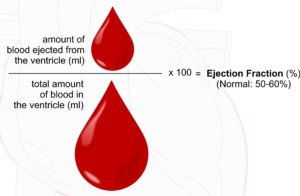
Shutterstock/ellepigrafica
In elderly people, the two biggest causes of CHF are coronary artery disease and high blood pressure.
Should most younger adults worry about getting congestive heart failure?
If you take good care of your body and have no birth defect with your heart, the answer is NO.
Common Causes and Contributors of Congestive Heart Failure in Young Adults
“This is most commonly caused by cardiomyopathy, which is a condition characterized by a weak heart muscle,” says Morton Tavel, MD, Clinical Professor Emeritus of Medicine, Indiana University School of Medicine, and author of “Health Tips, Myths and Tricks: A Physician’s Advice.”
“The weakness can be a result of any of a number of causes, ranging from viral infections, toxic drug exposures or genetic predispositions,” adds Dr. Tavel.
• This familial (genetic) dilated cardiomyopathy usually becomes relevant in middle age, but it can strike young adults, even children. This is the condition that is often behind the sudden deaths of young athletes during sports play.
• Myocarditis (inflammation of cardiac tissue)
• Lesions on the cardiac tissue caused by drugs or alcohol
• High blood pressure
• Chronic kidney disease
• Low “good” cholesterol (HDL) may be a contributor.
• Obesity — and the more obese, the higher the risk.
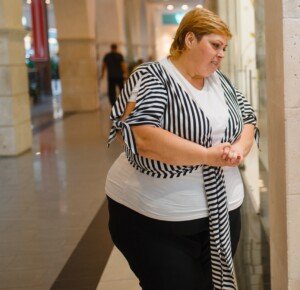
Obesity puts significant strain on the heart. Shutterstock/Nomad_Soul
So in general, if you as a younger adult should worry about something cutting your lifespan short, it would be more logical to worry about car accidents.
Congestive heart failure in younger adults (20s to 40s) is often not considered by doctors as a possible cause of their new patients’ symptoms.
Symptoms typically start out as fatigue, tiredness (not sleepiness), shortness of breath (getting “out of breath” despite mild exertion or even casual exertion), rapid resting pulse, and slight and unexplained weight gain (from fluid buildup).
Progression of fatigue can occur over several weeks, joined by nausea, vomiting, swollen ankles and a distended stomach.
Fatigue, weakness and feeling drained of energy have several benign causes, and often, stress or a change in lifestyle (e.g., new baby) is blamed.
Incidence in U.S. of Congestive Heart Failure in Younger Adults
• The five-year risk of CHF among 40-year-old whites is estimated to be 0.1% to 0.2%.
• In one study, the incident rate in blacks was 20 times that of whites (1% of black men and women who were part of the study; average age 39).
• There is no explanation for the racial disparity, but chronic kidney disease is more common in blacks.
Take-home Messages
• Average people under 50 who lead a healthy lifestyle and have no evidence of congenital heart problems should not worry about “getting” congestive heart failure—but they should take measures to help prevent it.
• No matter how young an adult you are, KNOW YOUR BLOOD PRESSURE. If it’s high, get it under control.
• Know your cholesterol profile and get it under control if undesirable.
• Clean up your diet. The kidneys don’t like being burdened with the toxins that are found in highly processed foods, namely added sugars.
• Maintain a medically acceptable body weight.
• Exercise! Exercise strengthens the heart.
In case you’ve developed a heart condition, it’s very important to wear a medical ID bracelet so that in emergency situations people nearby will know how to help you.
Lauren’s Hope is producing interchangeable medical ID bracelets that are attractive, durable, stylish and can be worn by young adults without drawing any attention to their illness.


